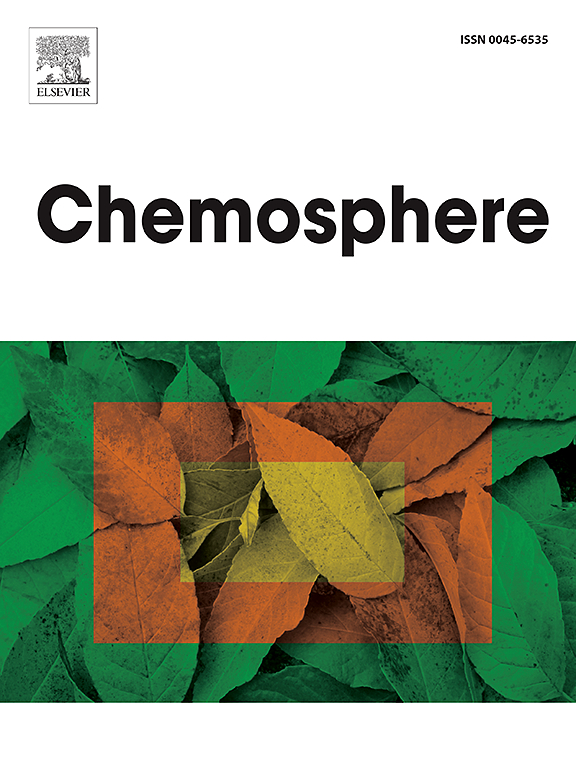Developmental toxicity of formulated insecticide mixture containing imidacloprid and beta-cyfluthrin in fish: Insights using zebrafish
IF 8.1
2区 环境科学与生态学
Q1 ENVIRONMENTAL SCIENCES
引用次数: 0
Abstract
Insecticides are critical in controlling pests and disease vectors. However, there is still a lack of ecotoxicological studies using commercial formulations of insecticides containing active ingredients. The study aimed to evaluate the developmental toxicity of a commercial insecticide mixture (imidacloprid [IMI] + beta-cyfluthrin [β-CYF]). Mortality, hatching rate, spontaneous contraction, heartbeat, morphological changes, reactive oxygen species (ROS), skeletal development, and locomotor behavior of zebrafish were analyzed. Embryos were exposed to imidacloprid (IMI) and β-cyfluthrin (β-CYF) in the following ratios: 0.001 mg IMI·L−1 + 0.000125 mg β-CYF·L−1 (C1); 0.01 mg IMI·L−1 + 0.00125 mg β-CYF·L−1 (C2); 0.1 mg IMI·L−1 + 0.0125 mg β-CYF·L−1 (C3); 1.0 mg IMI·L−1 + 0.125 mg β-CYF·L−1 (C4); 10.0 mg IMI·L−1 + 1.25 mg β-CYF·L−1 (C5) for 144 h. The results showed a mortality of 50 % of organisms in the C5 concentration. Embryos exposed to C1 and C3 showed tachycardia and hatched early compared to the negative control, indicating cardiotoxic and embryotoxic effects. The two highest concentrations tested (C4 and C5) induced evident morphological changes (yolk sac and pericardial edema, and spine alterations), and skeletal toxicity (absence of cartilage and bone formation), along with decreased larval swimming behavior. Also, the formulated insecticide (C1) increased ROS levels in zebrafish larvae. Results showed that the formulated insecticide containing IMI and β-CYF induces several toxic effects on developing zebrafish, indicating its environmental risk to aquatic organisms.

求助全文
约1分钟内获得全文
求助全文
来源期刊

Chemosphere
环境科学-环境科学
CiteScore
15.80
自引率
8.00%
发文量
4975
审稿时长
3.4 months
期刊介绍:
Chemosphere, being an international multidisciplinary journal, is dedicated to publishing original communications and review articles on chemicals in the environment. The scope covers a wide range of topics, including the identification, quantification, behavior, fate, toxicology, treatment, and remediation of chemicals in the bio-, hydro-, litho-, and atmosphere, ensuring the broad dissemination of research in this field.
 求助内容:
求助内容: 应助结果提醒方式:
应助结果提醒方式:


